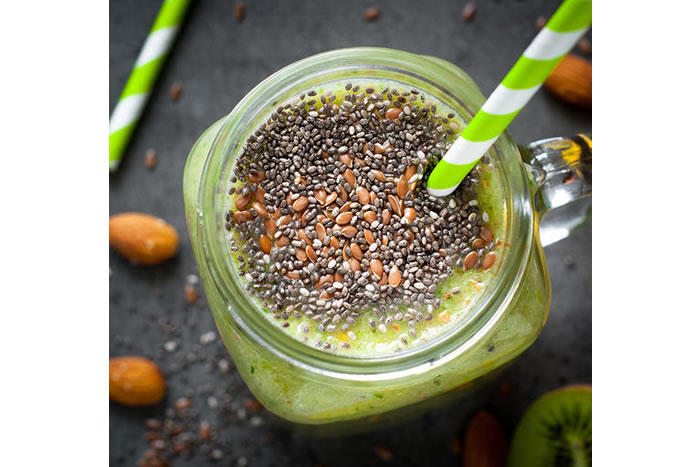Too Much of a Good Thing
Adding too many “healthy” add-ons like protein powder, nuts, nut butters, seeds, oils, avocado, supplement powders, and the like can amp up the calorie count. It’s especially easy to overdo it when you pour your smoothie into a bowl and start adding toppings like granola, coconut, cacao nibs, and more fruit. Remember, “super food” does necessarily equal “low-calorie.” Another common mistake is using too much fruit. There are lots of important vitamins and minerals in fruit, but the sugar can add up quickly. Aim for just one cup of fruit to keep portions in check. One thing you can be liberal with, though? Those leafy greens. You’ll get a lot fewer calories but tons of nutrients.
[contentblock id=1 img=adsense.png]
Your Portions Are Off
If it’s on the skimpier side, that morning smoothie might leave your stomach growling in an hour, setting you up for grazing all morning or overeating at lunch. Another common mistake: overestimating your calorie burn and downing a post-workout “snack” smoothie that exceeds your needs. Think of it this way: Would you eat a banana and a mango and a kale salad and a container of yogurt and a big spoonful of peanut butter and a tablespoon each of hemp, chia, and flaxseed in one sitting just to tide yourself over for an hour or two? If yes, then you must have a freakishly high metabolism. If no, rethink the size of your snack.
Read More: Smoothie Recipes That Are Healthy and Refreshing
Falling for “Natural” and “Low-Fat” Labels
Healthier-sounding sweeteners like agave nectar and coconut sugar still add calories. Ditto for low-fat versions of things like yogurt and ice cream. Even though honey and maple syrup may have some health benefits, they do still provide calories. Foods with buzzwords like “natural,” “organic,” and “gluten-free” may also not be objectively healthy choices. Keep in mind that artificial sweeteners may cause GI discomfort. Plus they condition our taste buds to expect super-sweet flavors, as they are very concentrated. Dumping a heaping scoop of stevia into your smoothie isn’t doing your body any favors. With all of these sweeteners, a little goes a long way.
[contentblock id=2 img=adsense.png]
Too Much Sugar
Added sugars in flavored yogurt, nondairy milks, and some protein powders are common contributors of excess calories. Again, you want to look at how much fruit you’re adding. Though it’s true that the sugar in fruit is naturally occurring fructose, too much in one go is still a lot for the body to handle. Using juice as a smoothie base is also a no-go for this reason.
Not Enough Protein
Though the fiber in fruits and veggies does make a smoothie more filling than juice, you still need some protein in there to slow digestion and help you stay satisfied longer. Make your smoothie with milk or yogurt as the base, or give silken tofu a shot. You can also add protein powder, nuts, or nut butter if you’re using water or nondairy milk as the base.
Read More: 8 Healthiest Drinks For Men
Getting Into a Rut
Predictability may help some people stay on track, but others find it reduces their motivation over time as they get bored. If your a.m. smoothie starts to look more like morning sludge, chances are it’s time to switch things up. Don’t be afraid to try new flavor and texture combinations. Worst-case scenario, you dump it out and start over.
[contentblock id=3 img=gcb.png]
Assuming Sipping = Chewing
Research has shown that our brain may not register that we’ve consumed a meal’s worth of nutrients when we drink a smoothie instead of sitting down to a plate of food. Pay attention to the cues your body gives you, and if needed, take a step back and look at what you’re putting in that smoothie to see if you can make it more filling without overdoing the calories. Rather than having a smoothie every day, you can also try mixing it up and having solid food. Noting a difference in your level of satisfaction might give you some clues about how you should fit smoothies into your diet. – fitnessmagazine








